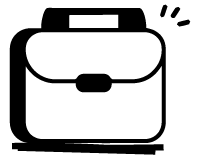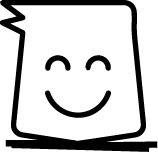
Many websites aim to share info, push a product, or make sales—but not all can keep folks looking long enough to do that well. Here, 2D animations on sites can make a big change. They bring motion, lead the viewer's gaze, and make a more fun space that keeps users hooked. When used right, animations can make hard ideas simple fast, point out main steps, and make a smooth feel as users move down a page. It's not about the show. It's about making data easy to get—and pushing guests to move forward.
This blog covers 10 practical ways to use 2D animation for websites to improve clarity, boost engagement, and drive more conversions.
● Why 2D Animation Works on Websites
● Eye-Catching Hero Sections
● Animated Explainer Videos
● Microinteractions That Guide Behavior
● Scrolling That Tells a Story
● Feature Tours & Product Highlights
● Animated Call-to-Actions
● Making Complex Info Easier to Understand
● Bringing Social Proof to Life
● Using Stats & Data That Move
● Conclusion
● FAQ
We've all hit sites that felt dull and flat. And we've also found pages that got us with just a few things that moved—like a button that jumped, a figure that waved, or a number that grew as we watched.
That’s the enchantment of 2D Animation for Websites. It’s not around making things see cool. It’s around locks in individuals outwardly, keeping them interested, and bumping them toward taking activity. Whether it’s directing consideration, building believe, or clarifying what your item does in seconds, movement can be the calm MVP that turns a bounce into a change.
In some cases, people don't want to read long bits of text. They want clear info fast. Short, fun explainer videos are perfect for this.
These videos act like a quick visual pitch. A 2D animation for websites in just 60 to 90 seconds can show viewers:
● What your item does
● Who it’s for
● Lead capture (form to get user information)
● Why it things
This is very helpful for things or services that are not easy to get right off. Instead of waiting for customers to figure it out on their own, you can show them how it works.
Explainer videos also create a sense of being easy to see through. People tend to trust what they get—and nothing makes trust faster than a simple, fun picture.
Furthermore, from a execution angle, explainer recordings are a win. They can:
● Decrease bounce rates by holding consideration longer
● Increment transformations by streamlining complex offers
● Boost SEO by expanding time went through on your page (a key engagement metric for Google)
To create the foremost of it:
● Keep it brief and engaging—aim for 1–1.5 minutes.
● Utilize inviting voiceovers and basic visuals.
● Put the video where it’s simple to find—ideally over the overlay or following to your signup frame, not buried three scrolls down.
In case you’re propelling something unused or revamping your landing page, an energized explainer is one of the least demanding ways to raise both clarity and transformations.
The small things often get missed—until they're gone. Move on a button and it bounces just a bit. Fill out a form and a green checkmark pops up softly. These slight moves look small, but they do a big job.
Microinteractions are quick moves that make using your site better.
● Make your location feel more cleaned and proficient Indeed essential interactions—like a menu that delicately slides open—give your location a sense of profundity and care.
● Offer moment criticism without requiring clarifications On the off chance that a button doesn’t do anything when clicked, clients might ponder on the off chance that it worked. But on the off chance that it changes color or symbol, it consoles them right away.
● Tenderly direct behavior and decrease grinding Movement draws the eye. A little movement can coordinate clients where to see following or highlight what’s intelligently.
When well thought out, small moves set the flow and beat. They help users feel sure while using your site—and sure users are more likely to click, sign up, or buy. The best part? These tiny moves don't need big files or long wait times. Most can be done with easy CSS or JavaScript, great for both design and use.
Ever been on a site where text fades in, slides up, or pops in as you scroll down? That’s not just for show—it’s a smart way to guide users through your stuff. Scroll-triggered moves help split up info, set the pace, and point to where to look without too much all at once.
Scrolling makes a flow. You don't show all your stuff at once; you reveal it slowly. This is how we take in info—little by little. It keeps readers in tune with your message and makes them look forward to what's next.
A bit of movement can be really strong. When users see things move as they scroll, they feel a drive. They want to see what's next, driving them to engage more with the page.
Instead of showing all your product details at once, you can show them one by one. This lets each point stand out and lets users take in what you offer without feeling too much.
Explaining how your item works doesn't have to mean just showing still pictures or giving your users a big block of words. That's an easy way to make them lose interest.
With 2D animation, you can show guests each part of your product's features—one by one. Picture moving dashboards, clear flow charts, or screen fakes that show where to click and what happens next. It feels more like a guided tour than a lesson.
Individuals prepare visuals much speedier than words. By appearing how something works rather than clarifying it, you abbreviate the learning bend significantly.
No one appreciates feeling befuddled. Vivified walkthroughs appear clients precisely where to begin and how to utilize key instruments, which makes onboarding smoother and bolster tickets less.
True, even good users might miss cool things. Tricks can show less used parts in a fun way, helping your people use your stuff better.
This way works well for things like SaaS items, mobile apps, or tools with many parts—any place where a bit of clear help can make a person's time easier and nicer.
Call-to-action, or CTA, buttons are key points where choices are made. Be it "Sign Up," "Get Started," or "Book a Demo," your CTA marks the change from just a visitor to a real lead. It deserves more than just a bright color or big text.
Adding some 2D animation can make your CTA pop but in a soft way. The trick is to ensure it looks like it naturally fits on the page, not like a bothersome popup.
A delicate, musical beat can snatch consideration without requesting it. It draws the eye in a calm, welcoming way—perfect for essential CTAs on landing pages.
A little vivified cursor or hand symbol indicating at the button can intuitively direct clients toward taking activity. It’s like giving a delicate visual prompt: “Hey, typically what you’re looking for.”
A slight bounce or squirm when somebody drifts over the button signals that it’s intuitively and prepared to be clicked. It includes a touch of liveliness that can progress click-through rates.
Just remember: actions should be easy and with a plan. If your button lights up, spins, and jumps all at once, you might scare users away. Here, less is better—go for simple, quick, and true to your brand.
Let’s face it—some ideas just don't come out right with just words. Whether it’s a hard process, a tech setup, or a feature show with many parts, trying to explain it with words alone might leave your group mixed up or bored.
This is where 2D Animation for Websites stands out. It changes hard-to-get stuff into clear views by showing users the ideas in a way that's easy to follow and recall.
Being active helps you set the speed. You won't drop all info at once. You will show each part of a step by step—one clear look at a time. This keeps too much info from hitting all at once and makes it easy to get.
Sometimes, a simple moving picture—like a lock and key for safe info or wheels spinning for automatic work—can tell more than lots of words. Being active lets you use pictures and stories to make hard ideas clear.
People remember what they see. Motion grabs onto what you see, making facts stick longer. That's a big win for teaching your group or getting them to act.
This is really good in areas like tech, health care, teaching, and money, where the things you sell often need to be explained. With the right motion, you can make even tricky stuff seem simple and friendly.
We all get that social proof can make trust. But let's face it—most praise parts are boring. A content piece with a quote and a title may do the job, but it doesn't always hit home right or show well. With 2D animation, you can give your praises a boost. Instead of just showing reviews, you show them off—adding life, motion, and real belief.
Instead of inactive content boxes, attempt invigorating discourse bubbles that blur or pop in one by one. It imitates a genuine discussion and draws the eye without being overpowering.
In the event that you work with known brands, appear them off—but make it energetic. A moderate, auto-rotating symbol slider feels advanced and takes up less space than a inactive framework.
Observing stars fill up or a fulfillment bar climb to 97% makes those numbers feel more genuine. It moreover fortifies your validity in a visual, important way.
These little touches make your tributes feel lively. More vitally, they offer assistance guests accept them—because we tend to believe what feels bona fide and well-presented.
Numbers talk volumes—but when they’re in movement, they command consideration. A dead "5M+ users" may grab an eye. But when that count grows from none in a clean flow? It brings hope, truth, and some fun. That’s the power of mixing 2D moves with facts.
A straightforward counter activity that ticks from to your real number—say, “1,000,000+ dynamic users”—adds vitality and force. It feels like something’s happening in genuine time.
Whether you’re appearing your development travel or outlining campaign victory, energized bars and timelines give structure. Clients can outwardly track your turning points without having to decipher charts.
Rather than a inactive pie chart, envision the cuts filling in easily. Or a bar chart that builds upward on stack. These little touches make your information less demanding to process and harder to disregard.

Won’t animations slow down my website?
Can I use 2D animation without hiring a designer?
Are animations good for SEO?
What if my audience is more “corporate” or traditional?
How do I know what to animate?
How do I measure if 2D animation is actually helping conversions?

Years in Work

Project done

Happy Clients
